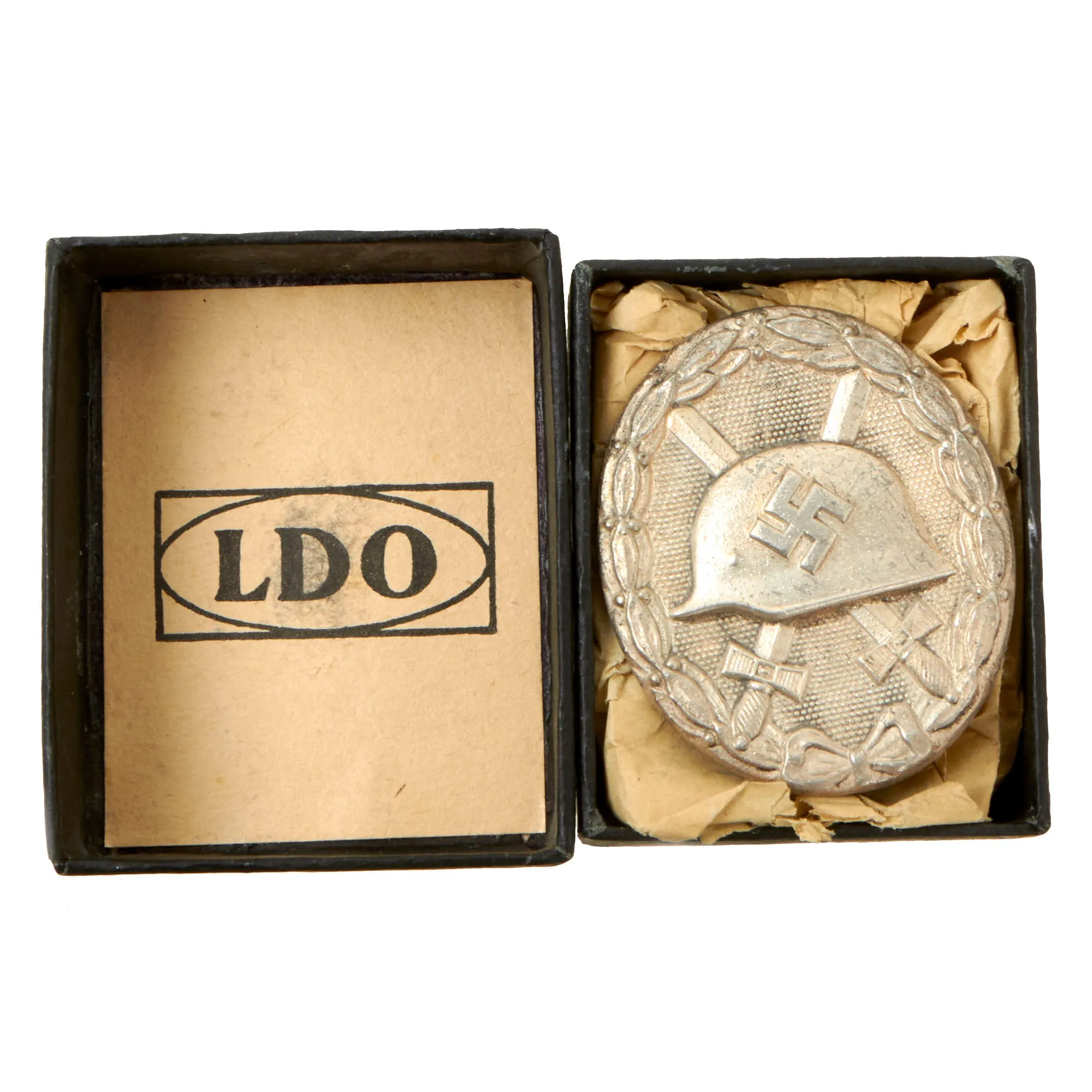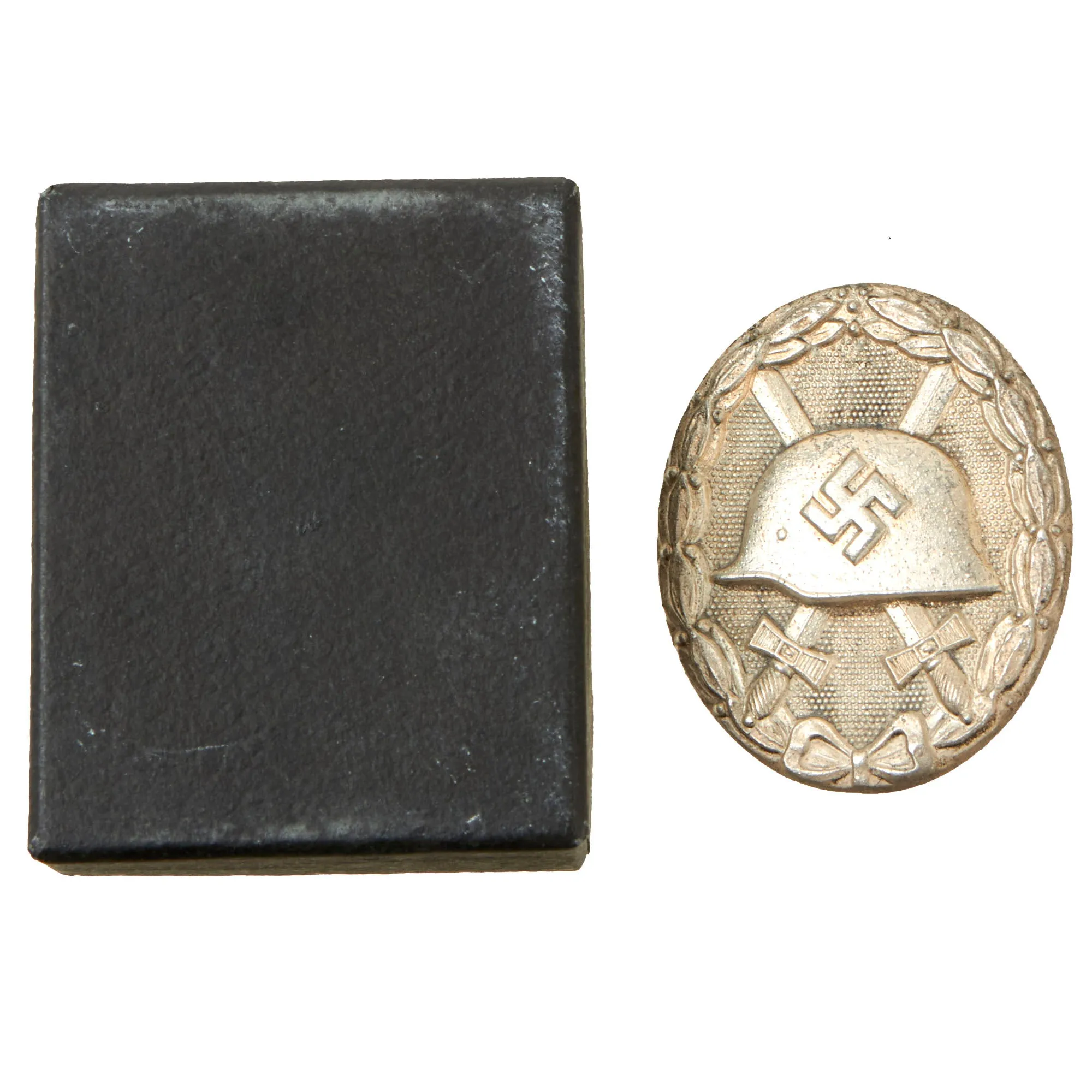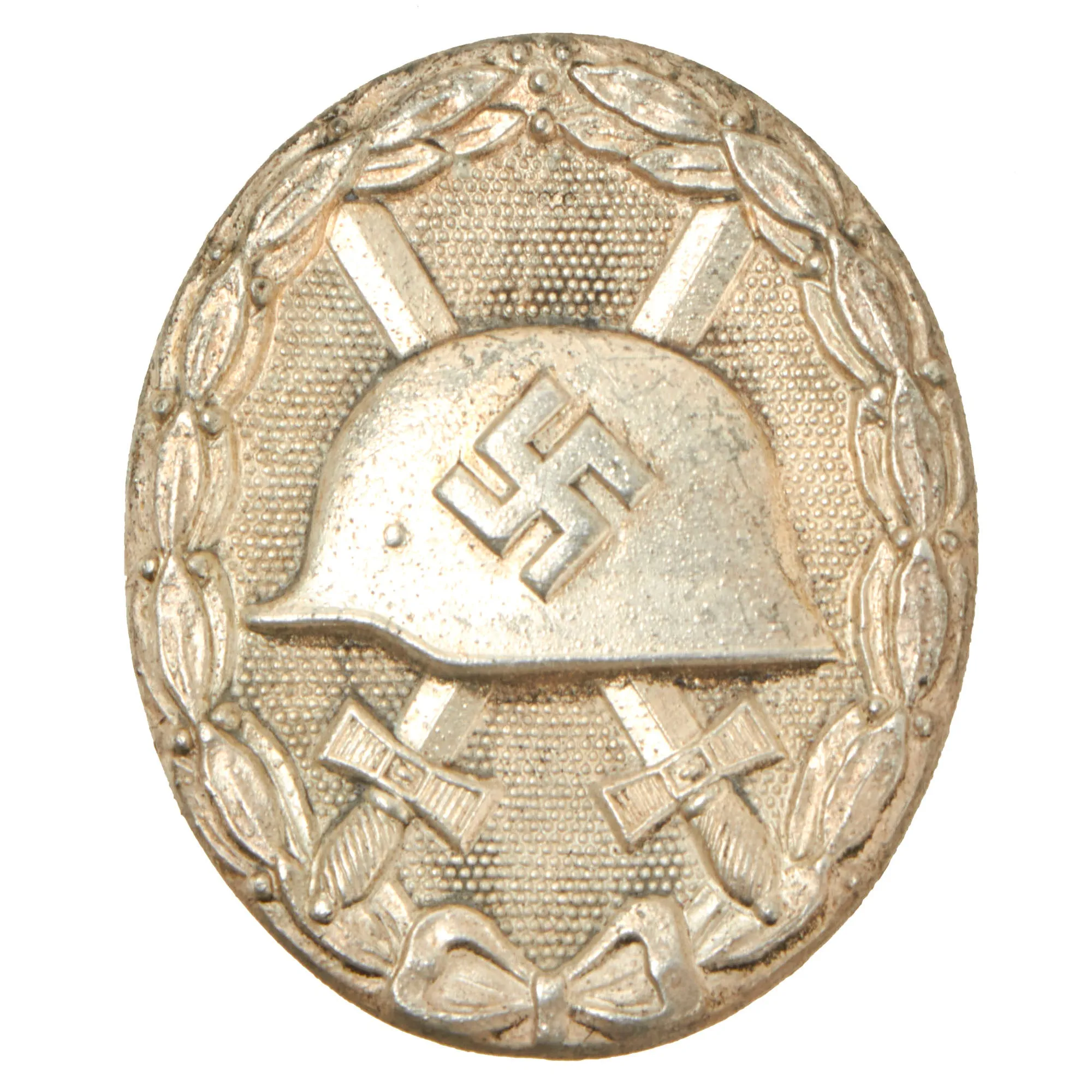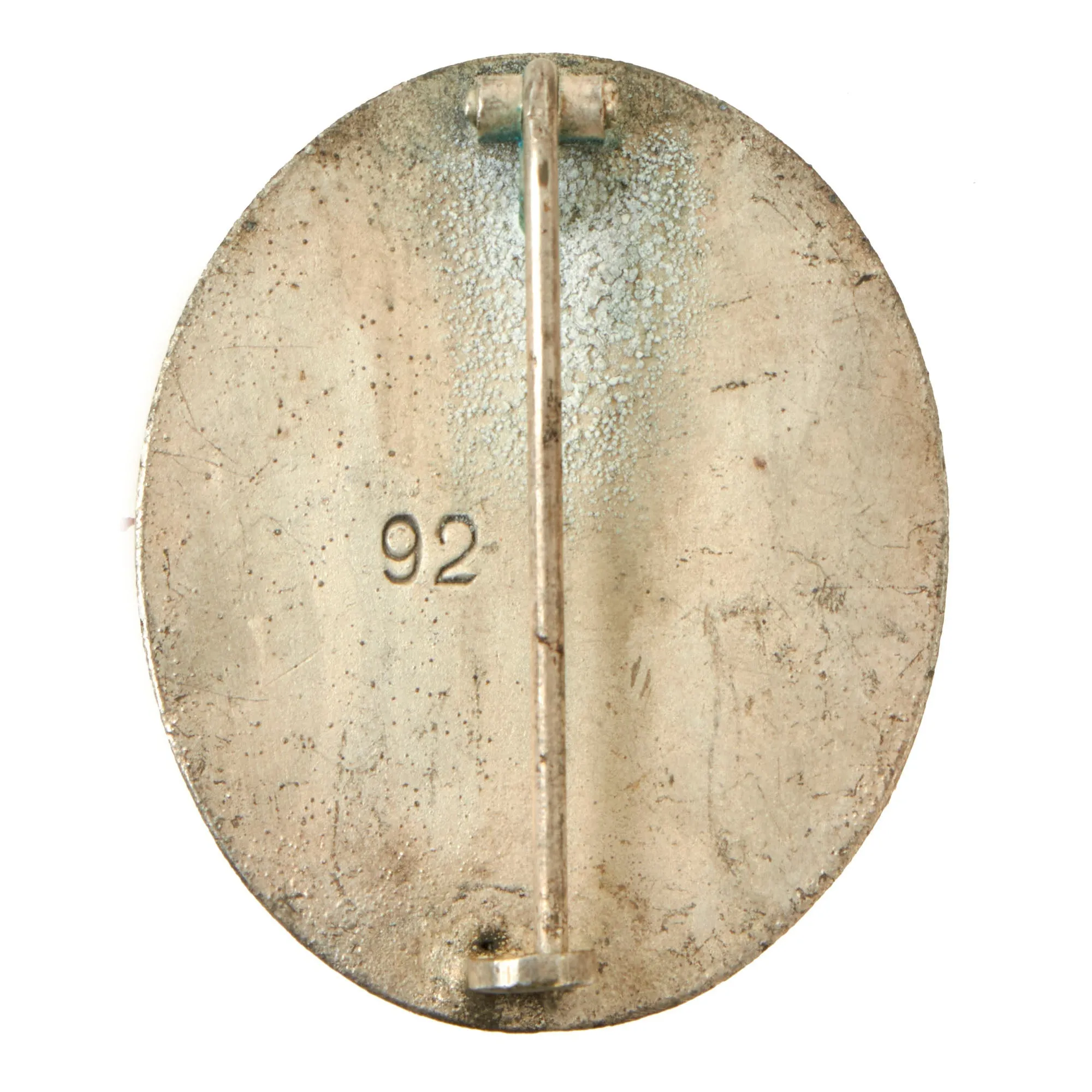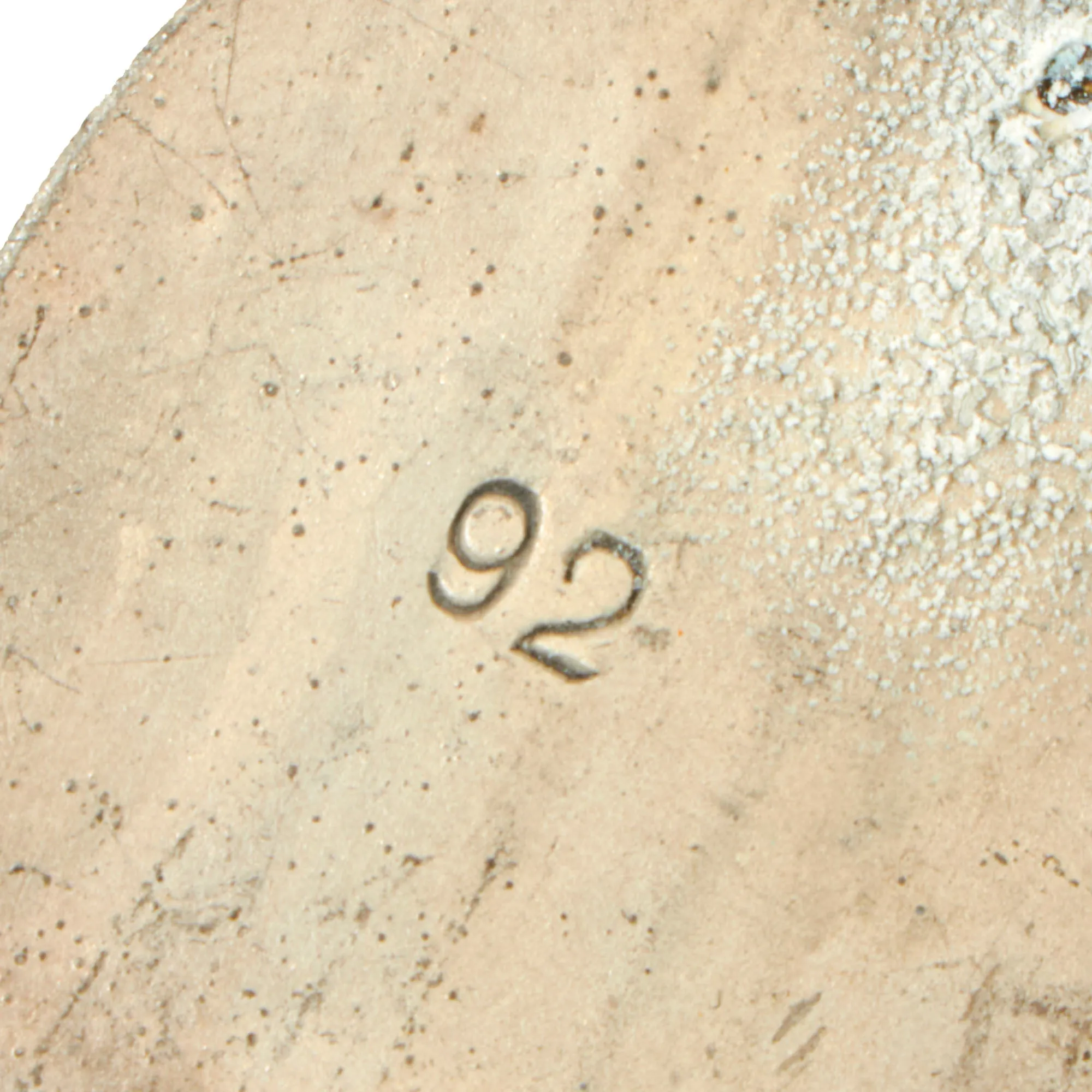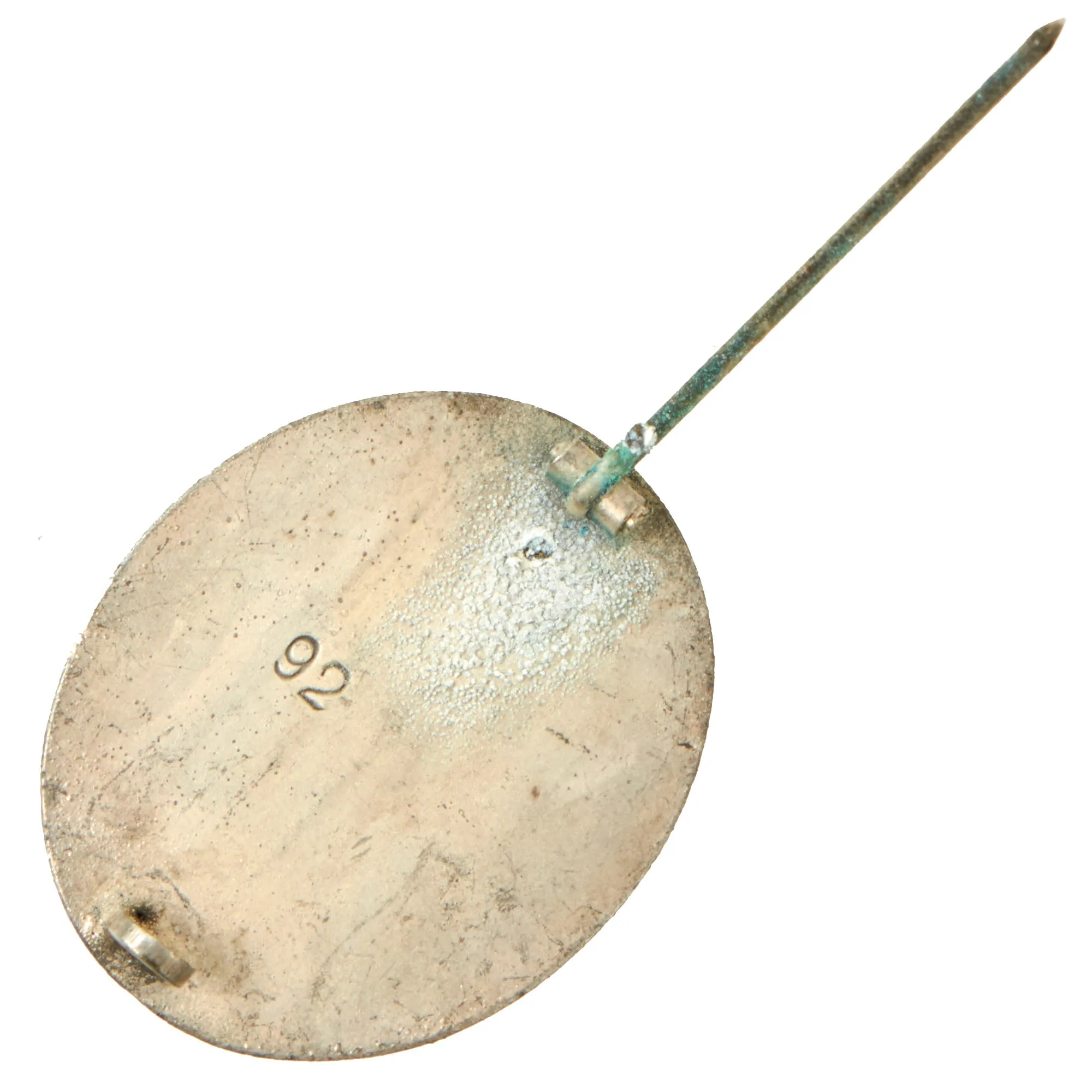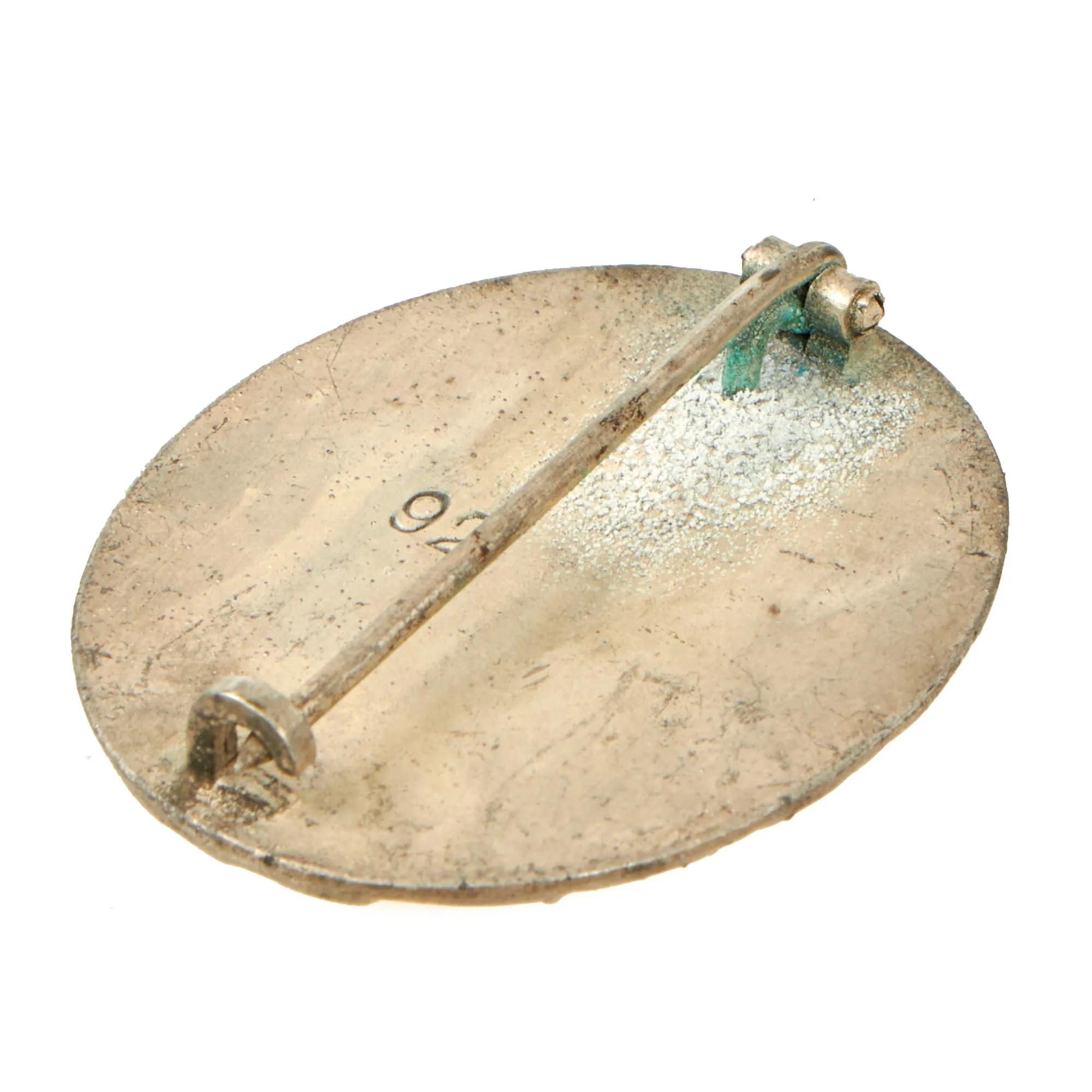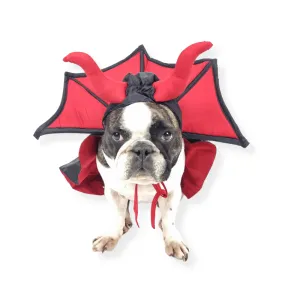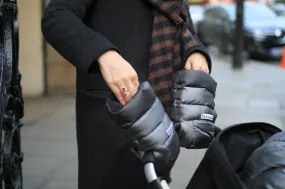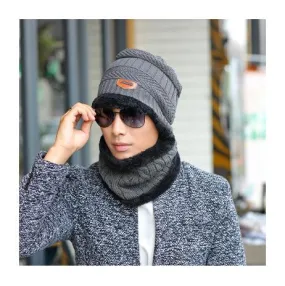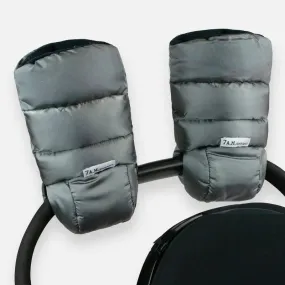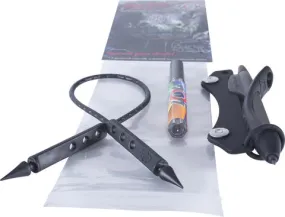Original Item: Only One Available. A fine maker marked silver wound badge with original LDO case box by Josef Rückert & Sohn of Gablonz an der Neiße. LDO Boxes are quite hard to find, and definitely adds to the value of this piece. The badge constructed out of a die struck, zinc-alloy base that has been silver washed. The oval badge depicts an embossed profile of a mobile swas, above an M35 pattern helmet, which is above two crossed broad swords. This then lies on a pebbled field and is surrounded by a laurel leaf and berry wreath which is tied together at the bottom with a bow tie.
The reverse features a full back and is maker marked with Präsidialkanzlei des Führers Lieferant (Presidential Chancellery Supplier) number 92, which represents maker Josef Rückert & Sohn of Gablonz a.d. Neisse. Prior to WWII the city was part of the so-called Sudetenland, which Germany annexed in 1938, and was mostly populated by Germans, but today is almost entirely Czech, as the German population was expelled after WWII.
The steel pin, stamped hinge and bent brass catch are all intact and in well-working condition. The silver wash has worn quite a bit, but a good amount is present in the background in front, and under the pin in the back. The badge measures 1.75 inches high by 1.5 inches wide. Overall this is a very good example.
Also included is the original presentation box in black with a logo for LDO on the interior lid, which stands for Leistungsgemeinschaft Deutscher Ordenhersteller (Guild of German awards manufacturers). The box still has the original paper. A great example ready for further research and display!
The German Wound Badge (Verwundetenabzeichen) was instituted during the First World War to recognize those wounded in the conflict. It was designed using a World War One style Imperial German helmet as the main motif. The helmet was set on top two crossed swords against a pebbled background and surrounded by a laurel leaves wreath.
During the Spanish Civil War the Third Reich reinstated the Wound Badge for a short period to honor those who were wounded during the conflict from 1936 to 1939. These German units participating in the assistance of the Spanish Fascists were deemed the “Condor Legion”. The pattern of the World War One Wound Badge was again used, except this time with a raised swas on the center of the World War One era helmet.
At the outbreak of war in September 1939 with Poland, Adolf AH once again reinstated the Wound Badge Award. Again the pattern of the badge was similar to that of the earlier style except the new design was freshened up a bit by using an M35 pattern German helmet and a slightly softer looking wreath. This pattern was used until the end of the war in 1945. After March 1943, due to the increasing number of Allied bombings, it was also awarded to wounded civilians in air raids. It was awarded when the wound was the result of enemy hostile action, with an exception being for frostbite. It is impossible to know the exact numbers of wound badges awarded during the course of the Second World War due to the vast scale and countless individuals who were wounded or killed in the conflict.
The badge had three classes:
- Black (3rd class, representing Iron), for those wounded once or twice by hostile action (including air raids).
- Silver (2nd class) for being wounded three or four times.
- Gold (1st class, which could be awarded posthumously) for five or more times wounded.
The "progression" could be waived in the event of loss of a limb or eyesight; when such a severe wound occurred, the silver badge was awarded.
Badges were made of pressed steel, brass and zinc. All versions of the Wound Badge were worn on the lower left breast of the uniform or tunic. The badge was worn below all other awards on the left. It ranked lower than combat badges. There were 24 approved manufacturers of the Wound Badge. At first, the Wound Badge in Black was stamped from sheet brass, painted semi-matte black with a hollow reverse pin back attachment or of solid construction. From 1942, steel was used to make the badges. The Wound Badge in silver was made (before 1942) from silver-plated brass, and (after 1942) from lacquered zinc, and had a solid reverse with either a needle pin or a broad flat pin bar. The Wound Badge in Gold was a gilded version of the Wound Badge in Silver. In 1957, a revised version of the Wound Badge was authorised for wear; however, the previous type could still be worn if the swas were removed (for example by grinding).

